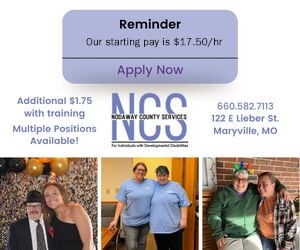And our stroke medical 'professionals' ARE DOING NOTHING TO GET TO 100% RECOVERY!
You'll want it when you are the 1 in 4 per WHO that has a stroke!
Stroke prevalence predicted to double by 2032
May marks Stroke Awareness Month, and according to the American Heart Association, stroke is the nation’s fifth most common killer and a leading cause of long-term disability. On average, someone in the United States has a stroke every 40 seconds. Every four minutes, someone dies because of one.
Dr. Terry Symonds, emergency services medical director, and Kara Couts, RN, at SSM Health St. Francis Hospital recently collaborated on a news release to educate Nodaway County residents about risk, prevention, and treatment of strokes.
In their release, they define the incident as “when blood, which carries oxygen, fails to reach part of the brain due to either a clot or a burst vessel.”
The release goes on to say, “Without oxygen, brain tissue begins to die. The extensiveness and location of a stroke determine the lasting effects of a stroke. Some people can recover completely from a stroke, while others can suffer paralysis of one side of their body, loss of speech and even death.”
The incidence of stroke is only expected to increase, with a frequently cited study predicting that ischemic strokes, which are the most common types, will double between 2000 and 2032.
According to the press release from SSM Health St. Francis Hospital, despite the prevalence and potential lasting effects of strokes, many don’t take it serious enough or know the warning signs.
Although some strokes occur for no apparent reason, medical professionals encourage people who might be at risk to take preventive measures.
Current smokers have two to four times an increased risk of stroke, compared to nonsmokers or those who have been smoke-free for 10 years. Those with high cholesterol, diabetes, and circulation problems are also at risk for stroke.
Reducing the likelihood of stroke calls for healthy living. In addition to smoking cessation, health professionals recommend maintaining a low body mass index, exercising regularly, and moderating alcohol consumption.
Moderate alcohol consumption, according to the Centers for Disease Control and Prevention, means up to one drink per day for women and two for men.
Reports indicate that physical activity is associated with 35 percent reduction in ischemic stroke. The National Stroke Association reports that one-fourth of strokes are recurrent events, so it’s especially important to address lifestyle changes after having a stroke.
Even if a person cannot prevent having a stroke, having a healthy lifestyle before the event can contribute to more favorable results during recovery time.
Stroke also lands in the top 10 causes of death in children, most frequently occurring in their first year of life. Pediatric strokes happen in about 1 in 4,000 live births. For children, the risk factors differ from those for adults. Maternal history of infertility, infection in the amniotic fluid during pregnancy, and high blood pressure in the mother while pregnant can increase risk.
To recognize and quickly respond to stroke, Couts and Symonds recommended using FAST, an acronym to help people identify and respond to signs of stroke.
F – Face drooping
A – Arm Weakness
S – Speech Difficulty
T – Time to call 911
The faster people can recognize symptoms of a stroke, the faster they can seek treatment from qualified professionals.
Follow us on Twitter @TheDailyForum.


No comments:
Post a Comment